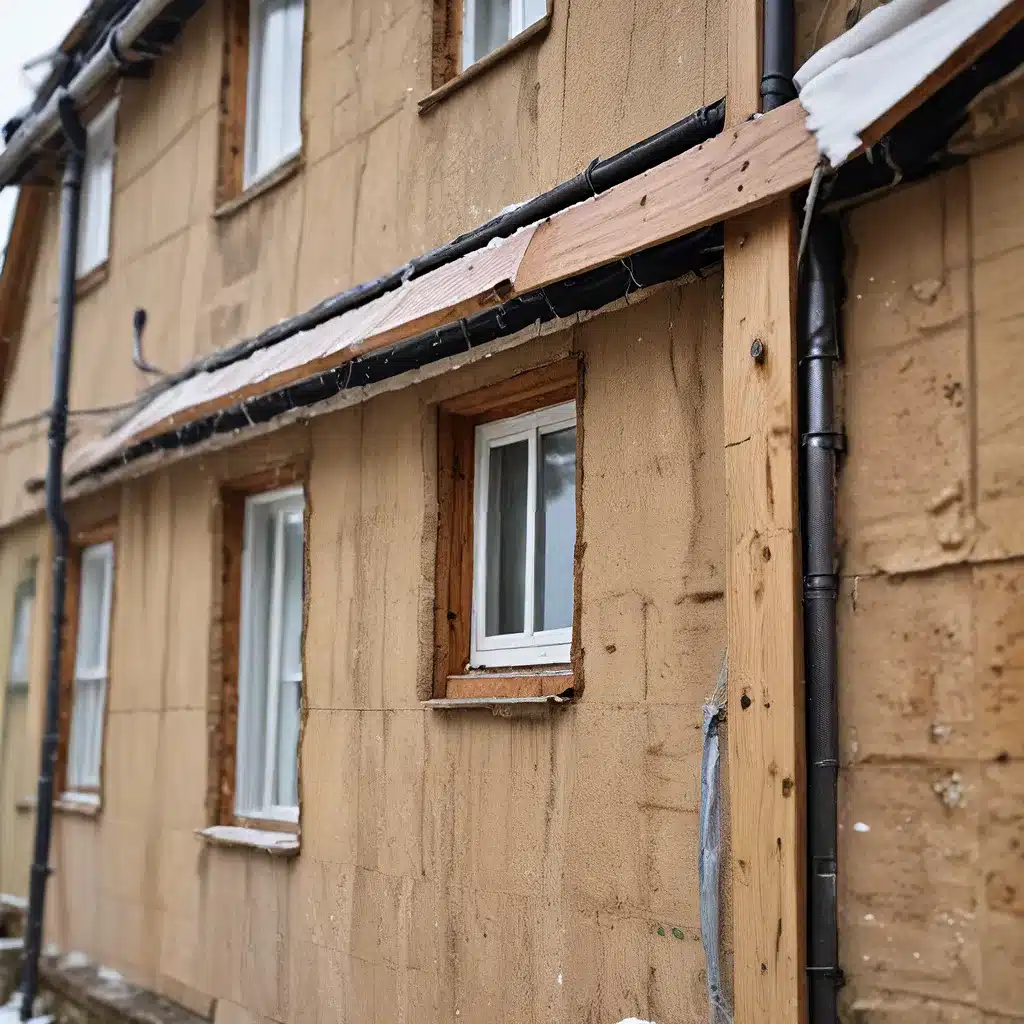
Bracing for the Elements: A Homeowner’s Guide to Weatherproofing
Picture this: it’s a blustery winter day, and you’re comfortably nestled in your living room, sipping a warm beverage. Suddenly, you feel a cold draft creeping in, and you can see the curtains gently swaying. Uh oh, that’s not a good sign! As a homeowner, I’ve been there, and let me tell you, that feeling of losing heat (and money) to the great outdoors is enough to make anyone shiver.
But fear not, my friends! Today, I’m here to share with you essential renovation strategies that will help you weatherproof your home and keep the elements at bay. Whether you’re dealing with drafty windows, air leaks, or a temperamental fireplace, I’ve got you covered.
Sealing the Cracks: Caulk and Weatherstripping to the Rescue
Let’s start with the basics, shall we? Caulking and weatherstripping are two of the most effective and cost-efficient ways to seal up those pesky air leaks. These simple DIY techniques can work wonders in reducing your heating and cooling costs, improving your home’s comfort, and even enhancing its durability.
According to the Department of Energy, caulk is the go-to solution for sealing cracks and openings between stationary house components, like door and window frames. Weatherstripping, on the other hand, is designed to tackle the gaps around movable parts, such as doors and operable windows.
Now, I know what you’re thinking: “But I’m no handyman!” Don’t worry, my friends, this is a job even a reasonably capable DIYer can tackle. With a little elbow grease and the right tools, you can transform your home into a cozy, draft-free oasis.
Fireplace Flues: Plugging the Leaks
Speaking of drafts, let’s talk about a notorious culprit: the fireplace flue. Over time, the metal components of your fireplace can warp or break, creating a direct channel for air to escape. And let’s be honest, who wants to be the one responsible for heating the great outdoors?
Luckily, there’s a nifty solution that can save the day (and your heating bills): inflatable chimney balloons. These durable plastic plugs fit snugly into the flue when not in use, creating an airtight seal. And the best part? They’re reusable and easy to remove, so you can still enjoy the occasional cozy fire without letting all that warm air go to waste.
But wait, there’s more! If you’re feeling a bit crafty, you can even create your own reusable fireplace flue plug. All you need is a plastic trash bag, some fiberglass batt scraps, and a durable cord with a tag. Just jam the plug into the flue, and voila – a homemade solution that’ll keep the drafts at bay.
Insulation: The Unsung Hero of Weatherproofing
Now, as important as air sealing is, it’s only half the battle. To truly weatherproof your home, you need to address the insulation as well. After all, even the most tightly sealed house won’t be able to retain heat if the walls, attic, and other key areas are poorly insulated.
Spray foam insulation is a popular choice for many homeowners, as it can effectively seal and insulate hard-to-reach areas. But if you’re planning a major renovation, you might want to consider some of the insulation techniques used in new home construction.
Remember, air sealing and insulation work hand-in-hand to create a cozy, energy-efficient home. So, be sure to address both aspects of weatherproofing for maximum impact.
The Home Energy Assessment: Your Weatherproofing Roadmap
Now, you might be thinking, “Okay, I’m on board with all this weatherproofing business, but where do I even start?” That’s a great question, my friends. The answer lies in a home energy assessment.
According to the Department of Energy, a professional energy assessment can help you identify all the opportunities to save energy and money in your home. They’ll pinpoint the areas that need the most attention, whether it’s drafty windows, insufficient insulation, or that pesky fireplace flue.
Think of it as a personalized weatherproofing roadmap, tailored to your home’s unique needs. And the best part? The investment in an assessment can pay for itself in the long run through the energy savings you’ll enjoy.
Embrace the Elements (But on Your Own Terms)
Now, I know what you’re thinking: “But I don’t want to live in a sealed, impenetrable fortress!” And you’re absolutely right. Weatherproofing your home isn’t about cutting off all contact with the great outdoors – it’s about taking control of the elements and creating a comfortable, energy-efficient living space.
After all, a well-weatherproofed home doesn’t just save you money on heating and cooling, it also enhances your indoor air quality and overall health. No more drafts, no more cold spots, and no more worrying about the weather wreaking havoc on your home.
So, my friends, let’s embrace the elements, but on our own terms. With the right renovation strategies and a little bit of elbow grease, you can transform your home into a cozy, weatherproof oasis that’ll keep you snug and cozy all year round.
Remember, you can find the general contracting and construction services you need to get the job done right. So, what are you waiting for? Let’s get weatherproofing!
Related posts:
No related posts.




